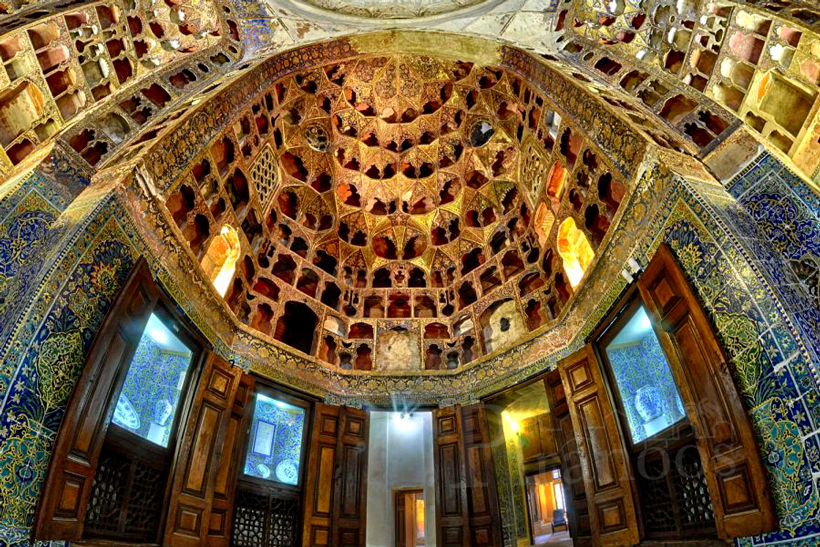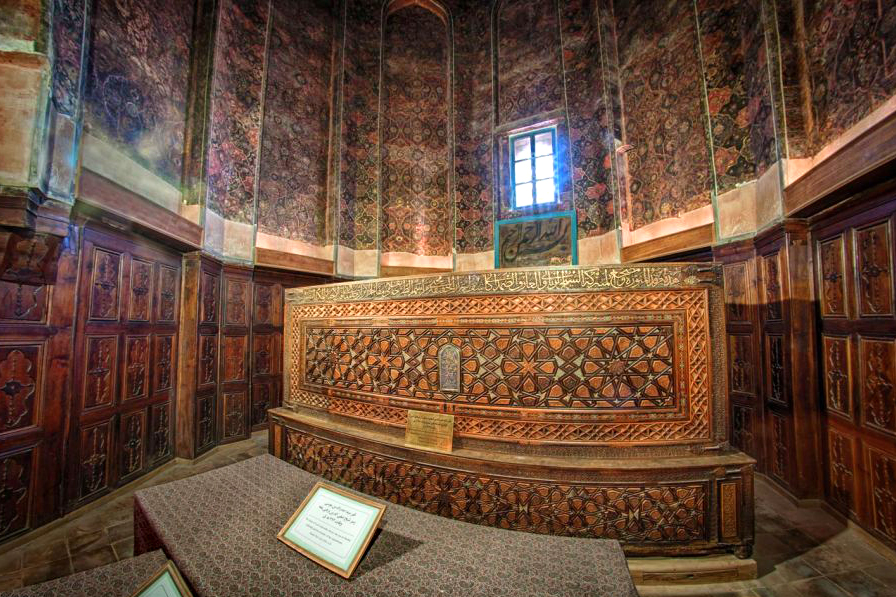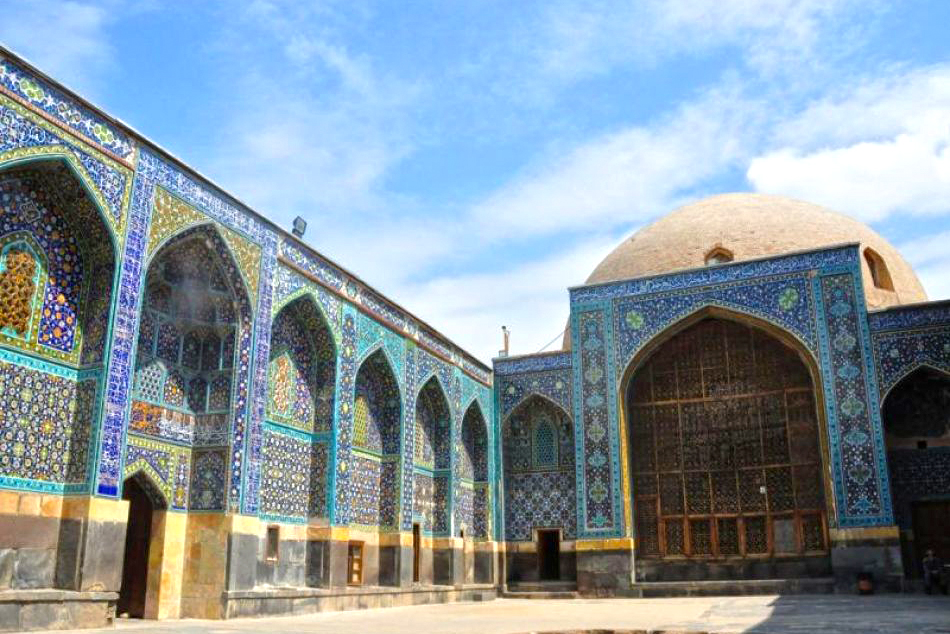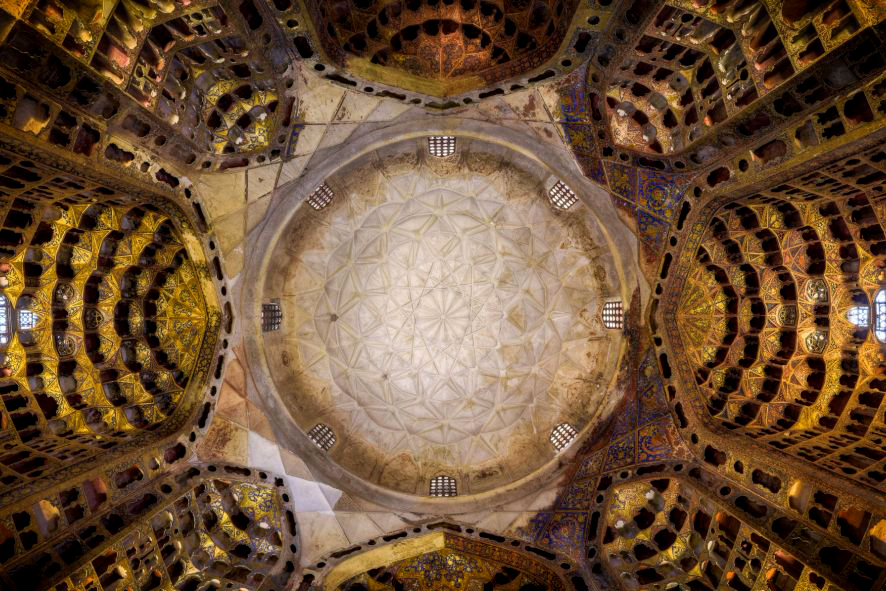Sheikh Safi al-din’s tomb (Bogh-e) is one of Ardabil’s most valuable historical sites. This Bogh-e is in fact a collection of tombs of elders, sheikhs and Safavid kings and a sacred place for worshiping and praying in Ardabil and listed in the UNESCO World Heritage List. In addition to the tomb of Sheikh Safi al-din Ardabili, the tombs of Shah Ismail I (the first king of the Safavid dynasty) and the wife of Shah Ismail (mother of Shah Tahmasb) are also located here. Part of this monument is also the graves of those killed in the wars of Shirvan and Chaldoran.
The astonishing architecture of this place is clearly the finest example of Safavid architecture and art and one of the most stunning masterpieces in Iran. This monument contains dozens of exquisite works in different themes of art, including the finest type of mosaic and Mogharnas tilings and plastering beautiful and magnificant inscriptions by great Safavid calligraphers (Mir Emad, Mir Qavameddin, Mohammad Esmail etc.), amazing engravings, silver works, gilding, and so on.

Sheikh Safi al-din Ardabili, a great Sufi and mystic, turned his Khanqah (a building designed specifically for gatherings of a Sufi brotherhood or tariqa) into a shrine of love and faith, where the poor were fed and the dervishes were provided with shelter, and food.
The construction of this building began in the lifetime of Sheikh Safi al-din. After Sheikh Safi al-Din died, according to his will his body was buried there. Shah Tahmasb I decided to expand the collection because of the respect he had for Sheikh Safi al-Din. To expand the building, seven sections had been added to symbolize the seven stages of mysticism. The seven sections were separated by seven gates, which were the hallmarks of Sufi attitudes.
The current complex, called Sheikh Safi’s Tomb, includes various sections such as the outside of the tomb (Ali Qapu), Sardar (the entrance), the large courtyard, the porch, the tomb of Sheikh Safi al-Din, the Harram (shrine), the tomb of Shah Ismail, the chini khaneh (chines house: Safavid chines dishes were used to be kept here). G), the mosque of JanetSara, the Khaneghah, Cheragh-khaneh, Chelleh-khaneh, Shahid-gah, and….

The first tomb from behind is Sheikh Safi al-din, The Second Tomb is Sheikh Sadr al-Din Musa (Sheikh Safi al-din’s Son) and the third tomb is Khajeh Ali Siahpoush (Sheikh Sadr al-Din’s Son).
Shah Ismail’s tomb is also located in the Sheikh Safi al-din’s Bogh-e complex.
The “Chinese House” is one of the most spectacular parts of Sheikh Safi Ardabili’s tomb. This section has four “Shah-neshin” and you will find such beautiful vaults that make it impossible to overlook them. Amazing engraved Mogharnas motifs, stunning paintings and gildings have made this part of Sheikh Safi Ardabili’s tomb unique in Iran.

Ghandil House is the most famous and beautiful part of the monument that locates right after the entrance hall. Beautiful wooden windows with gorgeous decorations on the upper floor have given a beautiful view to the Ghandil House.
To the left of the entrance hall is the Jannat sara Mosque. Jannat sara is designed as an octagonal space without any Mihrab (prayer niche in the qiblah wall of a mosque). It seems that the Jannat Sara was used more for the Sufi rituals and for the Sama ceremony.
The building is probably the oldest and most damaged part of the complex, and can be considered as a part of the Sheikh Safi’s own Khanqah dedicated to Sufi rituals, Chelle neshini, and dervishes’ gatherings.
